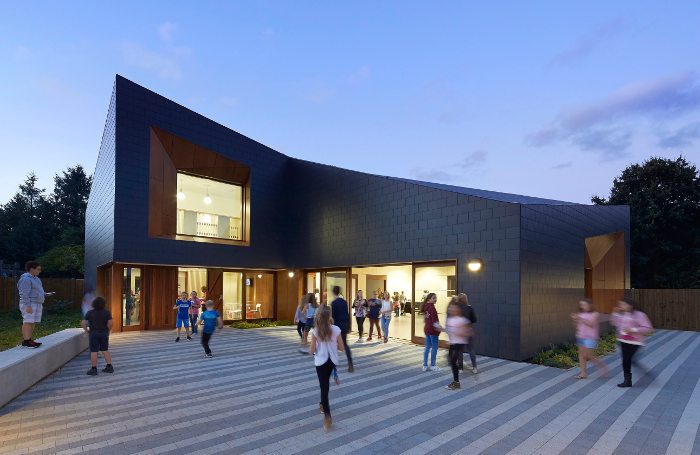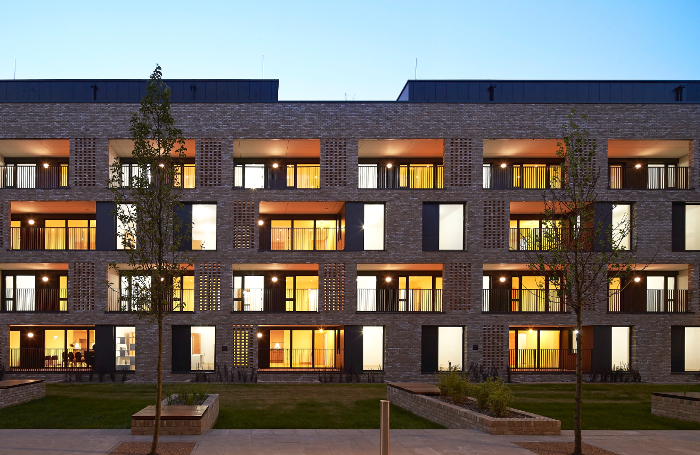Taking a practice forward and increasing the amount and scope of its work while ensuring that it does not overstretch itself is a challenging process. But it is one that all ambitious practices inevitably must address.
Some fortunate practices can point to a landmark commission as the point at which their fortunes changed. For many practices, however, onward and upward growth will probably be a gradual process. That need not be a bad thing.
Growth at Ayre Chamberlain Gaunt(ACG) to its current established status is the result of a decade of hard work, reveals director David Ayre. Their lodestar has always been a detailed and strategic business plan; delivering it has always provided them with a clear focus.
Their success is proof that it is possible to grow a business even without the advantages that often kick-start successful practices.
“We didn’t bring any clients from former practices,” Ayre states. “We realised that we would have to create our own opportunities.”
This required facing up to some hard truths and being ruthlessly pragmatic about their time, fees and capabilities. Their original set up was bare-bones, with ACG’s three founders working from a garage.
“We didn’t like competitions because we needed income. So we took on interiors, fit-outs and less attractive projects that other practices may not have accepted.”
A lukewarm attitude towards well-established good business practices is all too common in architecture, Ayre believes. He and his partners always adhered to the credo that without a sound business footing you cannot deliver quality architecture.
Setting up a team that gravitates towards different but complimentary roles is one key factor. ACG fell into this mode more by chance than design: Ayre was interested in business and finance; Dominic Gaunt, the current chair of RIBA Hampshire, took on marketing and practice; while Matthew Chamberlain was predominantly interested in construction techniques and the business of building.
They have, in fact, subsequently undergone psychometric testing and are confirmed to be, personality-wise, as about as different from each other as you can get.

One of the earliest significant projects for the practice was a local further education college, the Basingstoke College of Technology, where they got to know the new principal and impressed him with enterprising ideas.
A series of winning proposals for improving the appearance of the College’s 1960s buildings developed into a decade’s worth of college projects, followed by moves into schools and universities. However, education is now just one of the sectors the practice operates in.
Building on success and moving onto bigger things has always been the practice philosophy. There is always a growth strategy based upon a five year plan. The secret of executing a plan, Ayre suggests, is to break it down to a micro-process level: a series of mini-strategies that deal with individual issues.
These might include: moving into a new sector, hiring new staff, or examining flexible working practices. All should have a nominated individual pushing them forward.
While their growth had been slow and steady, these efforts crystallised for the practice in the spring of 2017, when over a memorable six week period Ayre Chamberlain Gaunt picked a slew of awards, including the RIBAJ MacEwan award for its community centre, The Point.
The practice’s profile thus shot up at a time when they were hiring, with the result that they managed to recruit some key people who Ayre suspects would not have considered them just a few months earlier.
“It gave us a massive confidence boost: a feeling that we could aim high and compete with the best practices in London.”

All three founding directors are now busy ambassadors for the practice, networking and building up contacts typically three evenings and three mornings a week, Ayre estimates.
“Our roles are now to keep the studio strong; nurturing and retaining talent and making sure people can progress and have a voice in the practice" he states.
“The objective is to keep constantly evolving and questioning why we are doing this. We want to create one of the top practices in the country, which means you have to always be hungry. I would say the three of us are now more ambitious than ever.”
David Ayre will be speaking about ‘Enabling and managing practice growth’ at this year’s Guerrilla Tactics conference on Wednesday 6 November at the RIBA, RIBA, 66 Portland Place, London, W1B 1AD. Tickets are now on sale.
Thanks to David Ayre, Director, Ayre Chamberlain Gaunt.
Text by Neal Morris. This is a Professional Feature edited by the RIBA Practice team. Send us your feedback and ideas
RIBA Core Curriculum Topic: Business, clients and services.
As part of the flexible RIBA CPD programme, Professional Features count as microlearning. See further information on the updated RIBA CPD Core Curriculum and on fulfilling your CPD requirements as an RIBA Chartered Member.
Posted on 3 October 2019.









